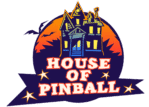Buying a pinball machine for sale in Europe—especially a used or vintage model—can be exciting, nostalgic, and… risky.
Why?
Because what you can’t see inside the listing could cost you hundreds (or thousands) later.
At House of Pinball, we’ve worked with collectors and first-time buyers across Europe and have seen it all—from hidden rust under the playfield to machines with missing serials or swapped parts.
This guide will show you how to verify a pinball machine’s history before you buy, so you can avoid scams, ensure value, and buy with confidence.
🧠 Why Machine History Matters
Pinball machines are mechanical-electronic hybrids. Their condition and value are deeply tied to their history:
- How many previous owners?
- Was it used in a commercial arcade or home only?
- Has it been refurbished or re-imported?
- Were the boards replaced or modified?
- Was it properly maintained?
Verifying these details builds trust in the sale and helps you make a smarter long-term purchase.
✅ 1. Check the Serial Number (and Match It)
Every original pinball machine comes with a unique serial number, usually found in 1–3 places:
- Inside the cabinet
- On the backbox
- On the playfield apron
Ask the seller to:
- Provide clear photos of the serial plates
- Confirm that all serials match across components
- Avoid machines with missing or mismatched numbers, which can signal:
- Stolen goods
- Rebuilt hybrids
- Lost provenance (reducing resale value)
💡 Pro Tip: Google the serial number—some have known histories documented in forums or auction records.
✅ 2. Ask for Ownership History (Paper Trail or Photos)
Many European pinball machines were:
- Imported from the US
- Used in arcades or bars
- Or passed through multiple owners
Request a basic ownership history:
- Who owned it before?
- Was it ever in commercial use?
- Is there a purchase invoice or customs record?
Even old photos of the machine in its original location can help verify condition and authenticity.
🚫 Be cautious of sellers who “don’t know” or “can’t remember” anything about its past—especially if they flip multiple machines.
✅ 3. Inspect for Re-import Signs (110V / Frequency Mismatch)
A large portion of used machines sold in Europe are US re-imports. That’s fine if they’ve been properly converted—but dangerous if not.
🧪 To verify:
- Check if the machine runs on 220V / 50Hz (EU standard)
- Look at the power supply and label
- Confirm CE compliance (or EU-compatible certification)
⚠️ Some machines are sold “as-is” without proper voltage conversion, putting you at risk of electrical failure or voided warranties.
✅ House of Pinball sells only 100% EU-ready machines, tested on 220V/50Hz systems.
✅ 4. Look for Signs of Excessive Wear or Restoration
History often leaves visible marks. A machine that’s been through heavy use or rushed restorations will show:
| Clue | What It Might Mean |
|---|---|
| Worn playfield art | Long-term arcade use |
| Replaced cabinet decals | Damage or repainting |
| Non-original flippers/buttons | Part replacements or cost-cutting |
| Overspray or misaligned art | Amateur restoration |
Ask for:
- High-resolution photos of the playfield, cabinet, and backbox
- Clear images of electronics and wiring under the playfield
💡 If possible, request a video of gameplay to confirm responsiveness and sound.
✅ 5. Verify That the Boards Are Original or Professionally Replaced
Boards are the brain of the pinball machine. Problems here are harder to fix and expensive.
Ask:
- Are the boards original, or have they been replaced?
- If replaced, were they official, or third-party?
- Has there been any battery damage or acid leakage?
🚩 Warning signs:
- Corroded battery holders
- Rewired or “spaghetti” solder jobs
- Missing board screws or brackets
At House of Pinball, all electronics are:
- Professionally tested
- Restored (or replaced with verified, quality parts)
- Backed by a warranty
🛠 Bonus Tip: Use the IPDB or Pinside to Check Production History
The Internet Pinball Database (IPDB.org) and Pinside.com are fantastic resources to:
- Look up machine production dates
- Confirm original specs
- Learn about rare variants or known defects
- Match photos with the machine you’re considering
If the listing says it’s a “limited edition”, check to see how many were actually made—and if yours matches.
🛡️ Why Buying from a Verified EU Seller Matters
Verifying history yourself takes time and effort. That’s why many buyers prefer to shop with trusted European dealers who do the legwork for you.
At House of Pinball, every used machine we sell includes:
| Feature | Included |
|---|---|
| Verified EU ownership & history | ✅ |
| Matching serial numbers | ✅ |
| 220V / 50Hz power compliance | ✅ |
| CE-certified or compliant electronics | ✅ |
| Restored or tested boards | ✅ |
| Video verification or in-person demo | ✅ |
| Warranty + support across EU | ✅ |
🏁 Final Thoughts: Buy Smart, Not Just Cheap
Used pinball machines are fun, collectible, and often more affordable—but only when you know what you’re buying.
✅ Always:
- Verify serial numbers
- Ask for history
- Inspect wear and electronics
- Confirm voltage compatibility
- Choose verified sellers
Or, skip the uncertainty and…
